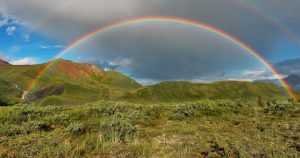 Here is my lesson plan for a traditional medicine lesson using local flora. Please feel free to use, modify, enhance, or expand at your pleasure. If you have any ideas or comments on what might make this lesson better, please share. This lesson was created with a general science and a medical intervention class in mind, but it could be easily manipulated to fit several different class settings. SOAP Note ScAK_Flora_LP
Here is my lesson plan for a traditional medicine lesson using local flora. Please feel free to use, modify, enhance, or expand at your pleasure. If you have any ideas or comments on what might make this lesson better, please share. This lesson was created with a general science and a medical intervention class in mind, but it could be easily manipulated to fit several different class settings. SOAP Note ScAK_Flora_LP
The primary Cultural Standard for Curriculum that my lesson applies to is Standard B. Standard B states that “a culturally-responsive curriculum recognizes cultural knowledge as part of a living and constantly adapting system that is grounded in the past, but continues to grow through the present and into the future.” In my lesson, students will be researching and exploring the surrounding area and identifying various native plants. From here, they would look up the traditional medicinal uses of the plants, which connects them to past knowledge of the region. This lesson can be expanded to reference present day medical research that is scouring the rainforest in search of the next best drug. The majority of modern pharmaceuticals are derived from compounds found in nature, and student’s could see the correlations between traditional medicine and present day research. The past is present, and the present leads to the future.
http://ankn.uaf.edu/publications/standards.html
Think this whole project is a ‘hook’, getting students looking around their environment for long known ‘fixes’ to modern ailments. Opens the door to an investigation of how we develop medicine and or how we figured out some of the most basic treatments. Nice work.
This is great! Medicinal plants are great!
Reuben,
This a great lesson plan and I would use it as a Science teacher to make the connection between Native knowledge of plant use with today’s medicine. I like the idea of a walkabout and including an elder to share valuable information with the students. Good job !
Reuben,
This is an awesome lesson with good formative and summative assessment as well as hands-on experience. There are a few things I would suggest-in Day 2, indicating “weather permitting” leads me to ask about an alternative/backup lesson plan indoors. Also, it wasn’t clear to me if the patient was a group member pretending they have an illness/injury or symptoms written on a piece of paper.
You incorporate kinesthetic, visual, and audio learning in your lesson plan as well as make parallels between Western and indigenous practices. This is great for different types of student learners and cultural backgrounds!
-Lindsay
Rhuben (or Reuben),
Thank you for providing us with interesting knowledge. Being in your group, I have read through your lesson plan before and would like to comment on it now.
Plants have always played an important role in multiple cultures. Berries are food, twigs make firewood, trees make shelter, and plants make medicine. I like the idea of a lesson plan based on medicinal plants and specifying how they are used.
Did you know that Tlingit people, at least in recent years, have made a Devil’s Club chapstick? It burns, but works better than Burt’s Bees.
Thank you,
Mason Shearer
Reuben… GREAT LESSON! As a non-science person, I was definitely interested in the path your lesson was taking and the depth of knowledge. I have seen “Plant Books” as assignments – and I appreciate that this goes one step further to make it applicable and highlights the traditional way flora were used. Thank you! And thanks for the link to the .pdf to add to my resource books for all the biology students that are doing the plant book project!